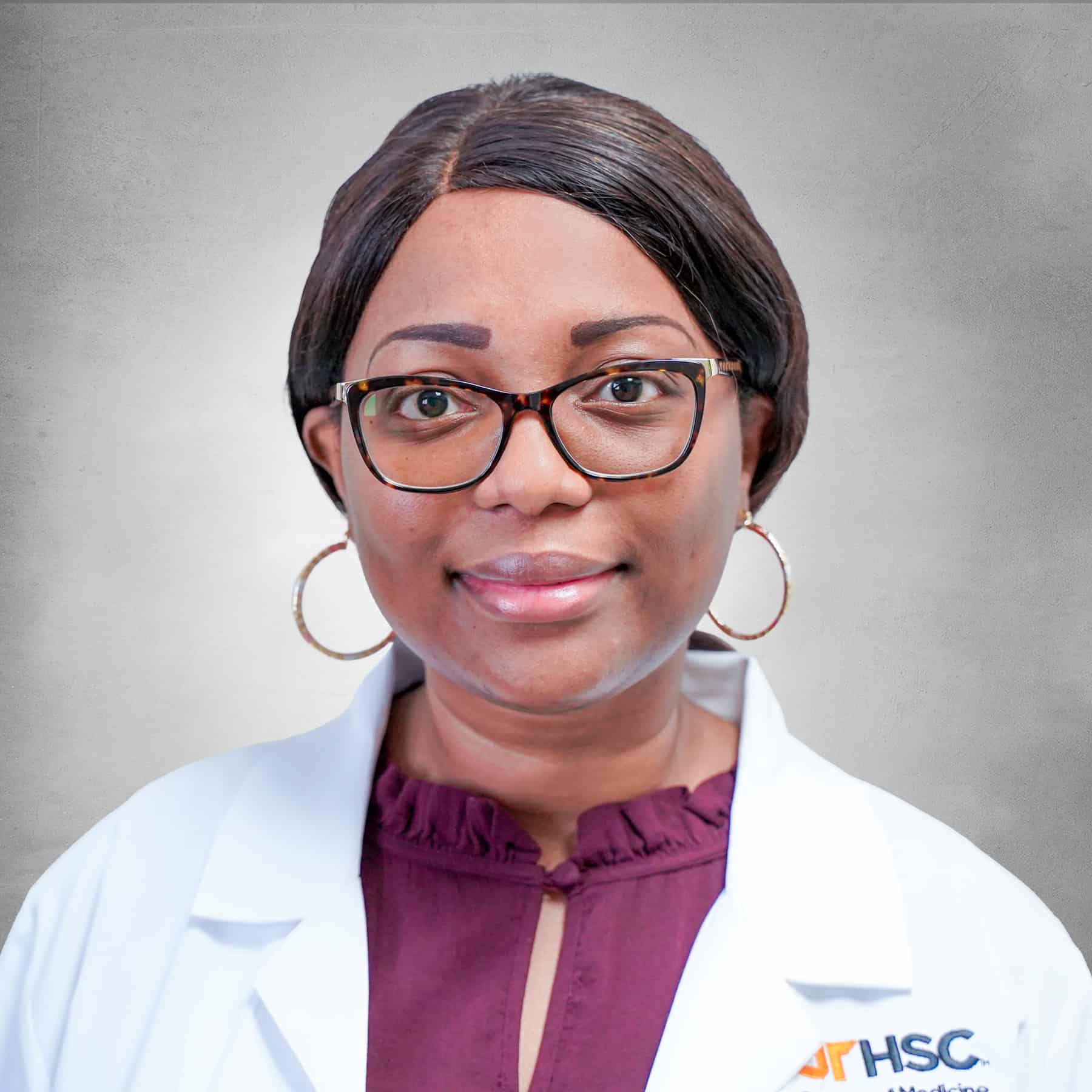Dr. Ugochi Ogu, medical director of Regional One Health’s Diggs Kraus Comprehensive Sickle Cell Center, recently led the discovery of a novel sickle cell variant.
The discovery contributes to the overall body of knowledge about sickle cell disease, in turn helping physicians improve how they care for patients.
At the Diggs Kraus Center, Dr. Ogu and her team deliver exceptional patient care through monitoring, medical intervention and education.
Helping sickle cell disease patients to live healthier lives requires both excellent clinical care and research that improves understanding of the condition and its treatment.
Ugochi Ogu, MD, medical director at Regional One Health’s Diggs Kraus Comprehensive Sickle Cell Center, is a leader in both.
As clinicians, Dr. Ogu and her team deliver care for acute and chronic symptoms associated with sickle cell disease, a genetic disorder that makes it difficult for red blood cells to deliver oxygen throughout the body. As researchers, they recently discovered a novel sickle cell variant that adds to the body of knowledge about the disease and how to provide optimal care.
“We strive to give patients the best care, and that means investing in clinical care and in cutting-edge research,” Dr. Ogu said. “My job is to help patients feel good as long as I can – to keep their sickle cell at bay so they can get the most out of life. We’ve come a long way, but there’s still a lot of work to do.”

Dr. Ugochi Ogu recently led the discovery of a novel sickle cell variant. “We strive to give patients the best care, and that means investing in clinical care and cutting-edge research,” she said.
Dr. Ogu and her team are proud to be part of that work through their recent discovery, which is published in the journal Hemoglobin. Identifying the new variant, called Hemoglobin S/Haringey, required medical detective work that Dr. Ogu says was both exciting and fulfilling.
It all started when a patient was admitted with acute pancreatitis. When his bloodwork showed a positive sickle cell screening, Dr. Ogu and her team were called in.
She started by performing a hemoglobin electrophoresis, a blood test that measures the types of hemoglobin in the blood. It revealed the patient’s blood contained 40 percent sickle hemoglobin (Hemoglobin S), and 50 percent an unknown variant.
Dr. Ogu then performed genetic sequencing to look for mutations that would offer clues about the variant. What came back was noteworthy: the patient had one copy of the Hemoglobin S variant and one copy of the unfamiliar Hemoglobin Haringey variant. This novel combination, Hb S/Haringey had never before been encountered.
Dr. Ogu scoured medical literature, searching for references to Hemoglobin Haringey. She found it exactly twice: a passing mention in a research article and a singular listing in a registry.
She contacted the researchers who uploaded the information in the registry to get their insight into the variant, and also spoke with the patient, a man in his 30s who was likely surprised to be interviewed by a sickle cell expert.
“When we asked him, he didn’t report any of the complications normally associated with sickle cell disease,” she explained. “There was nothing we could attribute to sickle cell disease based on his reported history.”

Patients with sickle cell disease can suffer pain episodes, heart problems, acute anemia and other complications. Dr. Ogu uses treatments like medications, blood transfusion and lifestyle changes to help patients lead healthier lives.
The most common sickle cell complication is pain crisis, which occurs when tissues and organs become starved of oxygen. Other acute issues include stroke, acute anemia and an enlarged spleen. Chronic symptoms include leg ulcers, heart and kidney problems, and avascular necrosis, when bone tissue, usually in the hips, dies from lack of oxygen.
While the patient didn’t report any of those concerns, a scan did ultimately show bone loss in his hips. After ruling out other causes like trauma and steroid use, Dr. Ogu concluded the necrosis was attributable to sickle cell. Additional bloodwork also showed anemia linked to sickle cell.
The fact that the patient was asymptomatic was revealing, Dr. Ogu said, suggesting Hemoglobin S/Haringey is a mild or even benign form of sickle cell disease. That, in turn, helps provide insight for patient care.
Dr. Ogu noted the more physicians know about sickle cell variants, they better they can predict how severe a patient’s disease is and which complications to expect. That helps them deliver the most effective preventative care, monitoring and acute care.
For the patient who led to Dr. Ogu’s discovery, it means continued monitoring to identify and address symptoms early if they do develop. “You’d want to treat him as you would any sickle cell patient and keep doing close follow-up and all the preventative care we do,” she said.
At the Diggs-Kraus Center, Dr. Ogu and her specialized team of physicians, nurse practitioners, medical assistants and social workers offer a variety of treatment options. Oral and IV medicines are available, and blood transfusions have long been regarded as a staple for improving blood oxygenation. Dr. Ogu oversees those treatments along with researched-based options like clinical trials for drug and non-drug therapies.
Dr. Ogu also focuses on educating patients to prevent complications via lifestyle changes like eating healthy, exercising and staying away from tobacco, alcohol and drugs.
“We keep very close tabs on our patients to make sure they’re up-to-date on their treatments and preventative care, and to address any issues or barriers they’re facing,” she said. “We love taking care of patients and educating them about their condition. I truly have my dream job!”